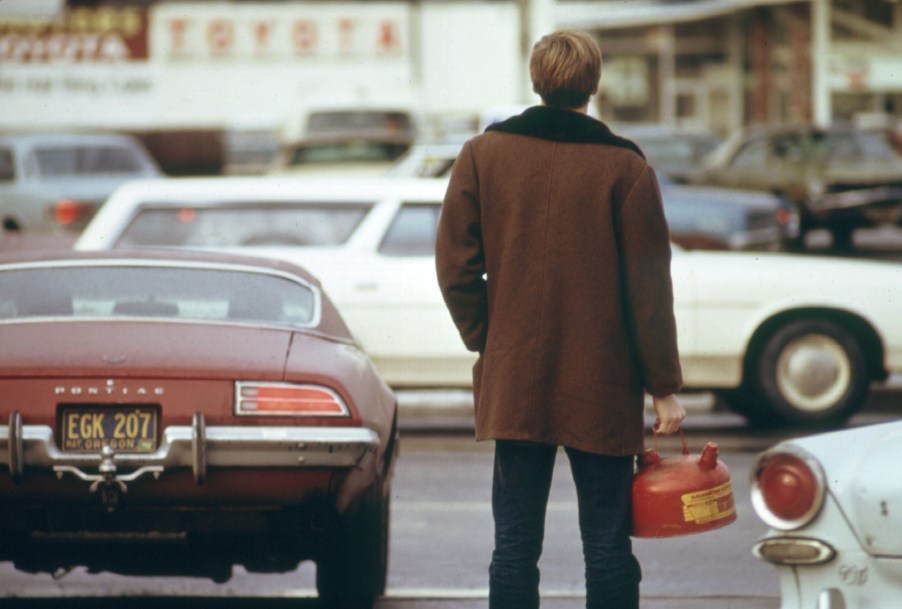
Emergency Energy Plan Announced: Will 55 MPH Limits Return?
Today the International Energy Agency announced a 10-point emergency plan to head off the impending oil crisis upon us now. Yes, it looks a gas crisis is coming and will get worse before it gets better. We’ll go over the IEA’s list below, but we’ve been here before. Car enthusiasts and regular drivers were not happy about the new laws that came about, like lowering the speed limit on freeways and highways to 55 mph.
Could we be seeing a similar gas crisis to 1973?

Back in 1973, America experienced its first gas crisis. Long lines at the pump and people practically giving away their 440 Roadrunners and big-block Corvettes were a common occurrence. Sales of Chevy Vegas and Ford Pintos shot up. Some of the crappiest cars ever produced became desirable because of gas mileage. Gas rationing meant not being able to gas up on certain days.
And it was the precursor to the GM X-Body and Chrysler K-Cars; both miserable vehicles. But hey, they got decent gas mileage. So what is the likelihood of these steps coming back? Let’s look at the 10 points.
Here is the IEA’s 10-point plan

- Reduce speed limits on highways by at least 10 mph.
- Work from home up to three days a week where possible.
- Car-free Sundays in cities
- Make the use of public transport cheaper and incentivize micromobility, walking, and cycling.
- Alternate private car access to roads in large cities.
- Increase car-sharing and adopt practices to reduce fuel use.
- Promote efficient driving for freight trucks and delivery of goods.
- Using high-speed and night trains instead of planes where possible.
- Avoid business air travel where alternative options exist.
- Reinforce the adoption of electric and more efficient vehicles.
Today we also learned that the US has cut normal trade relations with Russia over its invasion of Ukraine. So available crude oil supplies won’t be coming from Mother Russia. Thus, the timeliness of the Emergency Energy Plan.
Will speed limits be reduced?

The first item on the IEA list is reducing speed limits. If mandated, as the National Speed Limit law was in 1973, the top speed may come back. States like Arizona, South Dakota, and Texas, with 75- and 80-mph limits could see them lowered above 55 mph.
As for the second recommendation, to work from home, we’ve been doing that for two years, so the impact for most Americans will be minimal. But for those who do share a workspace, that could change. The rest of the recommendations are slowly being implemented in larger cities in the US. But the need for public transportation, in general, will only increase, making it more crowded and harder to negotiate.
Russia sells the US more than just crude oil

Beyond what may lay on the horizon for those who drive cars and trucks on a regular basis, there is more bad news. We get more than crude oil from Russia, and a lot of it is related to auto manufacturing. The US buys certain minerals, that will definitely affect car production. One is palladium. It is used in catalytic converters. We imported over $1.6 billion worth of palladium from Russia last year. But that’s not all.
About 80 percent of the minerals used in catalytic converters is rhodium, and guess where that comes from? Russia. We import 1.2 million grams worth over half-a-billion dollars. So two key components of catalytic converters will have to be found elsewhere. So it is about more than just crude oil.
None of this is good news, but it could be worse, we could be hunkered down in an underground bunker in Kiev. Or worse. But Americans will all have to shoulder some of the pain as we move from COVID to war in Eastern Europe.



